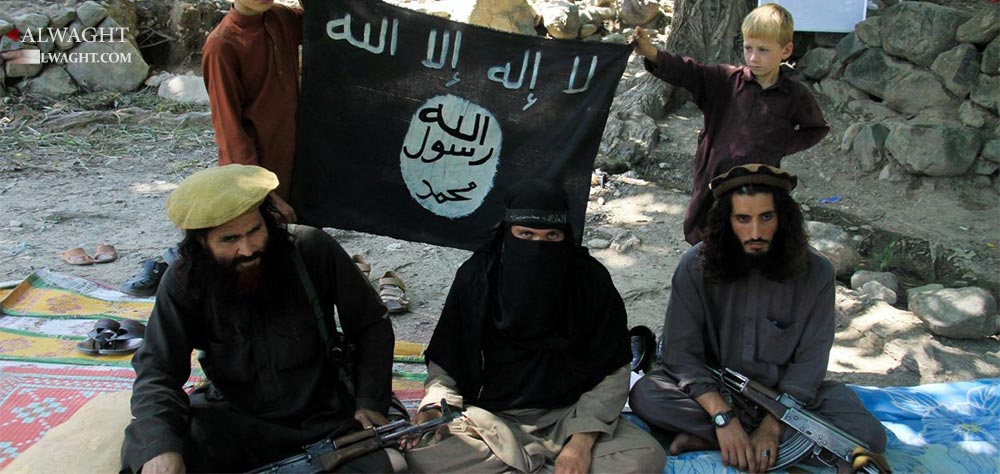Alwaght- ISIS in Syria and Iraq has failed to achieve the preplanned goals, and to a large extent, was brought under strains of the Axis of Resistance’s forces, including the forces of Syria, Iraq, Lebanon’s Hezbollah and also Iran’s advisory forces. However, the terrorist group is rising and expanding in Afghanistan. What players are benefiting from emergence of ISIS in Afghanistan?
The ISIS of Afghanistan is essentially different from the Arab ISIS and the Levant ISIS. For the first time in early 2014, the terror group ISIS started activity in Achin district, some 35 kilometers away from Jalalabad, the center of Nangarhar province. It then seized control of Shinwar District in Nangarhar and 18 villages including Deh Sarak, Pikhi Nargeseh and Shedl Bazar and Meydanak in the vicinity of Achin. The ISIS militants in Achin are actually mostly the migrants who five years ago and after Pakistan’s military operation in Ourkazi and Kheyber Agency areas crossed the borders, fleeing to south of Afghanistan. In fact, a majority of Afghanistan’s ISIS originates from Pakistan’s Taliban militants who crossed Durand border lines and entered Afghanistan.
The foundation of private schools and also religious schools, mostly in Kout town in Nangarhar, during the past five years has boosted relations of people with Pakistan’s Taliban. Nearly 2500 boys and 1700 girls are now studying at Kout’s schools. In fact, as the time went by, and due to the attractions of ISIS, the Pakistani migrants were attracted to the terrorist group. This tendency of people to ISIS has caused rifts between ISIS and Taliban. With ISIS intensifying activity, the Salafists from Kunar, Nuristan, Badakhshan and Kunduz joined ISIS in Achin. Death of the former Taliban leader Mullah Omar on the one hand and recently killing of his successor Mullah Akhtar Mansour on the other hand have enhanced the strength of ISIS camp and impaired Taliban in Afghanistan. It is notable that Afghanistan’s southern regions and Nangarhar province, due to proximity to the border and easy access to the equipment sent from Pakistan, are convenient places for training and equipping the terrorists of ISIS. Furthermore, some Pashtun tribes also hold links and cooperate with ISIS. Supported by some Arab and Western intelligence agencies, these radical groups are using ISIS name and brand to achieve their already set objectives. The most significant players that benefit from their support for ISIS in Afghanistan are the US-led West, Pakistan and Saudi Arabia.
Perhaps the US and NATO purport that rise and growth of ISIS in Afghanistan is not related to them, however, the experiences have proven that the West is a good free rider, and so it manipulates any movement or event in its favor. It doesn’t matter for the West if there is Taliban, Al-Qaeda, Haqqani Network or ISIS; the significant matter is that the Western interests are not threatened by these radical and terrorist groups.
The second important thing for the West is to be able to use these groups against the countries that are against its presence in Afghanistan; like Iran, Russia and China.
Some of the tribal leaders from Nangarhar in a meeting with Hamid Karzai, the former Afghan president, have noted that the US drones bombed the anti-ISIS forces as well as some groups of Taliban that are active against the terrorist group. In the past few months, Pir Ghamaruddin Sahib, an anti-ISIS tribal leader, was killed by the US drone strikes. There are also reports suggesting that ISIS militants are transferred by unknown planes at night.
Concerning Pakistan’s benefits from ISIS in Afghanistan, it must be noted that this regional player has always used the radical groups to pursue its interests. The Americans at least 10 years ago concluded that Pakistan, although being a US ally in counterterrorism, backs militarily and financially the fundamentalist groups like Taliban and Haqqani Network, and in fact adopted double standards in dealing with the extremist groups. But Pakistan, to steer clear of these charges, launched the Operation Zarb-e-Azb in the country’s tribal areas, North Waziristan, Khyber Agency and other regions, pushing to Afghanistan the radicals of Pakistan’s Taliban and foreign militants like the Uyghurs, the Tajiks, the Uzbeks, the Kyrgyz, the Chechenians, and the Arab Afghans. That is why a majority of the groups that formed in Afghanistan are actually from Pakistan and foreign countries.
Swearing allegiance to ISIS and its leader Abu Bakr al-Baghdadi, these groups benefited from financial support of the group, as they went under indirect backing of the Saudi Arabian intelligence services. To deny charges of support for Taliban, Islamabad would favor ISIS’ presence in Afghanistan. Additionally, Riyadh favors the terrorist group in Afghanistan in a bid to damage Iran’s interests and also the Shiites in the war-torn country.



























